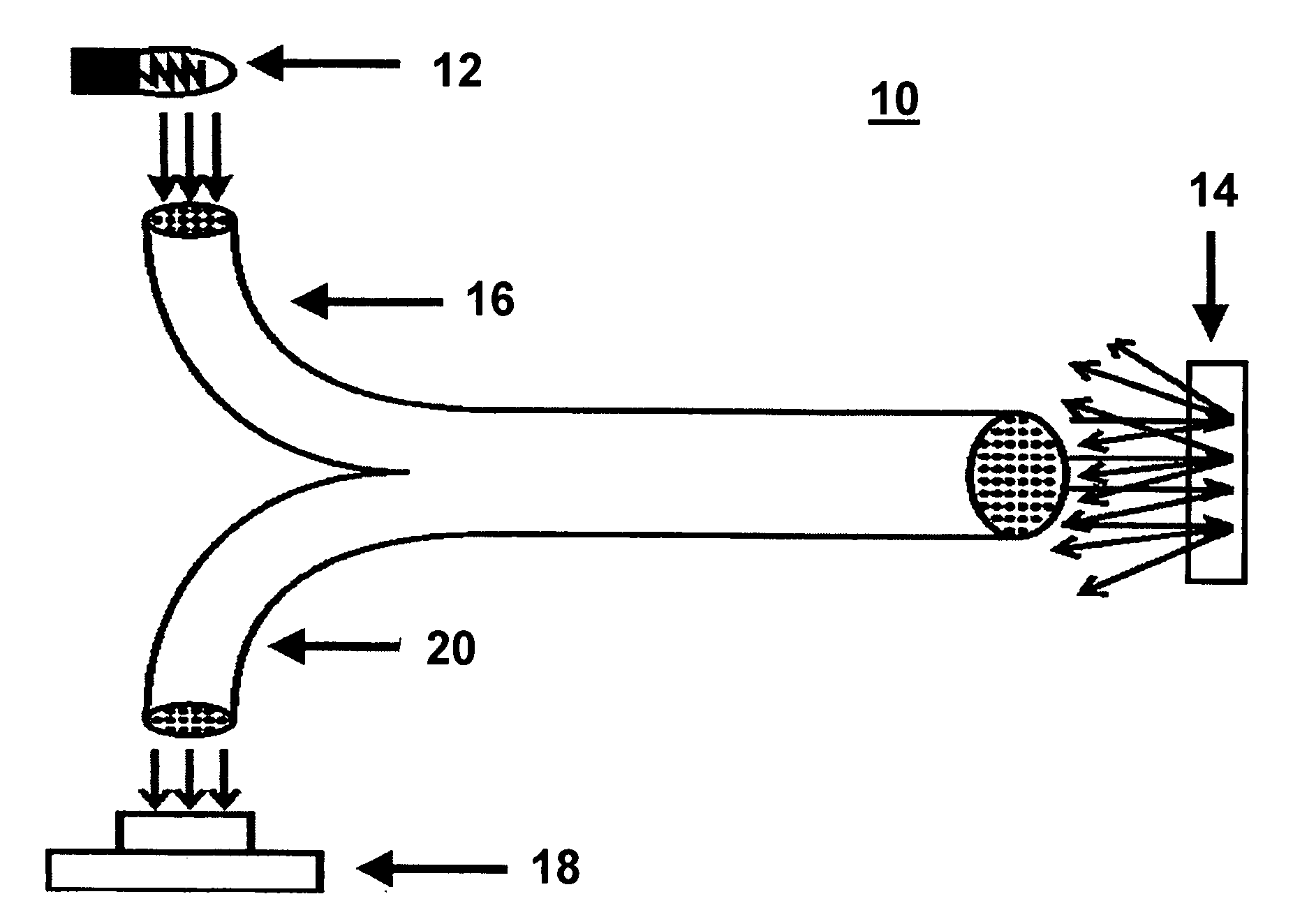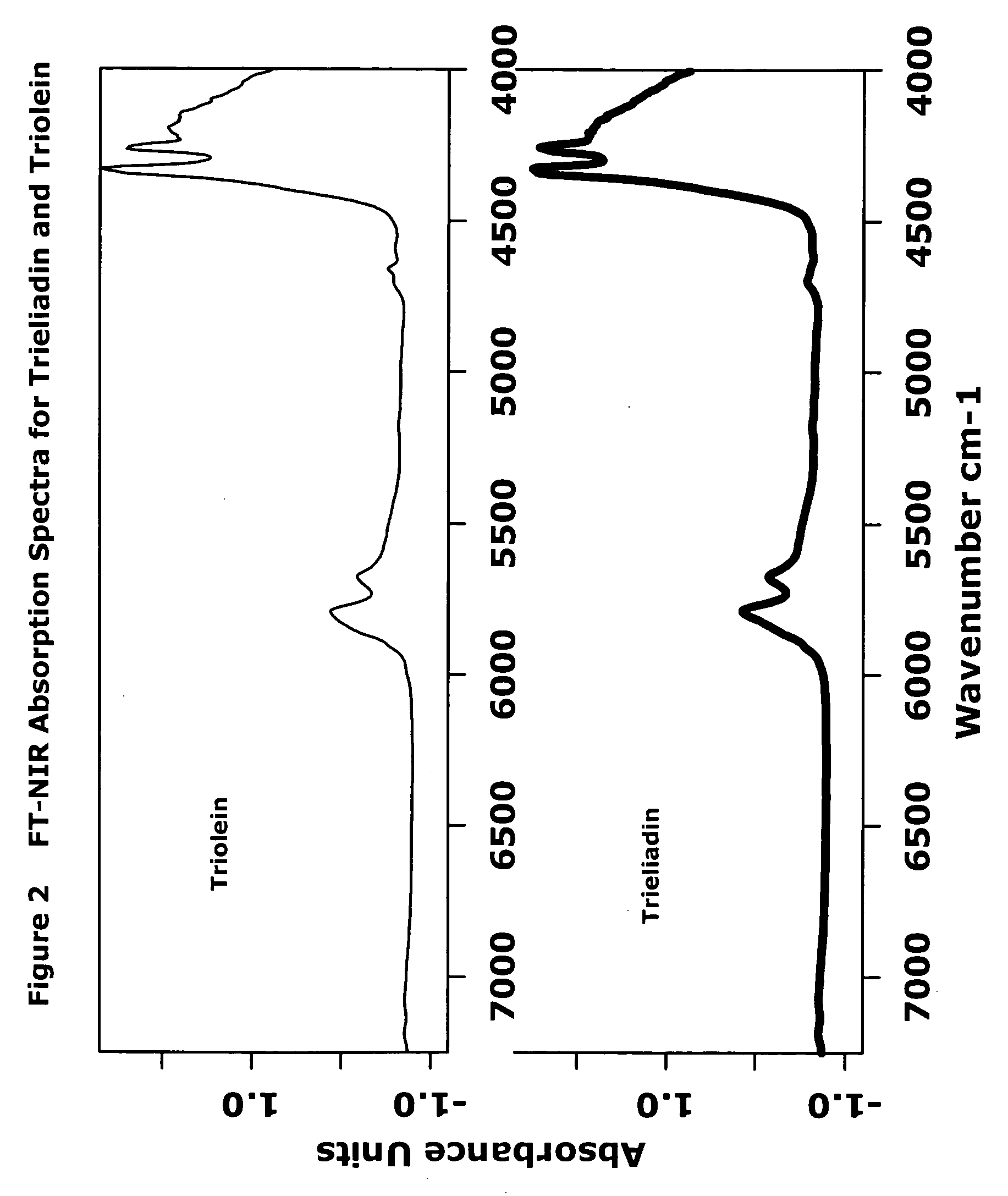FT-NIR fatty acid determination method
a fatty acid and measurement method technology, applied in the field of fatty acid content measurement, can solve the problems of inconvenient use, inconvenient calibration of instruments, and inability to accurately measure the content of fatty acids, etc., and achieve the effect of accurate calibration matrix of instruments
- Summary
- Abstract
- Description
- Claims
- Application Information
AI Technical Summary
Benefits of technology
Problems solved by technology
Method used
Image
Examples
Embodiment Construction
[0041] The invention provides a method for determining the fatty acid content of a selected material using a Fourier Transform Near infrared (FT-NIR) spectrometer and using various calculations.
[0042] The FT-NIR spectroscopy has a much higher resolution and accuracy level than Near Infrared (NIR) spectrometers. The FT-NIR spectrometer has a spectral resolution of 0.3 nm (2 cm−1 at 8000 cm−1) whereas other grating or filter instruments are between 2 nm (5 cm−1 at 5000 cm−1) to 10 nm (25 cm−1 at 5000 cm−1). Further, dispersive instruments operate in a frequency domain whereas the Fourier Transformed NIR Infrared (FT-NIR) may be operated in the frequency domain or a time domain. The advantage of operating in a time domain allows for faster results.
[0043] Near infrared wavelengths of light are absorbed by species due to distinctive molecular vibrations and low level electronic excitations. Many molecules, particularly molecules of biochemical interest, have characteristic “fingerprint...
PUM
| Property | Measurement | Unit |
|---|---|---|
| wavenumber | aaaaa | aaaaa |
| wavenumber | aaaaa | aaaaa |
| fatty acid reference analytical | aaaaa | aaaaa |
Abstract
Description
Claims
Application Information
 Login to View More
Login to View More - R&D
- Intellectual Property
- Life Sciences
- Materials
- Tech Scout
- Unparalleled Data Quality
- Higher Quality Content
- 60% Fewer Hallucinations
Browse by: Latest US Patents, China's latest patents, Technical Efficacy Thesaurus, Application Domain, Technology Topic, Popular Technical Reports.
© 2025 PatSnap. All rights reserved.Legal|Privacy policy|Modern Slavery Act Transparency Statement|Sitemap|About US| Contact US: help@patsnap.com



